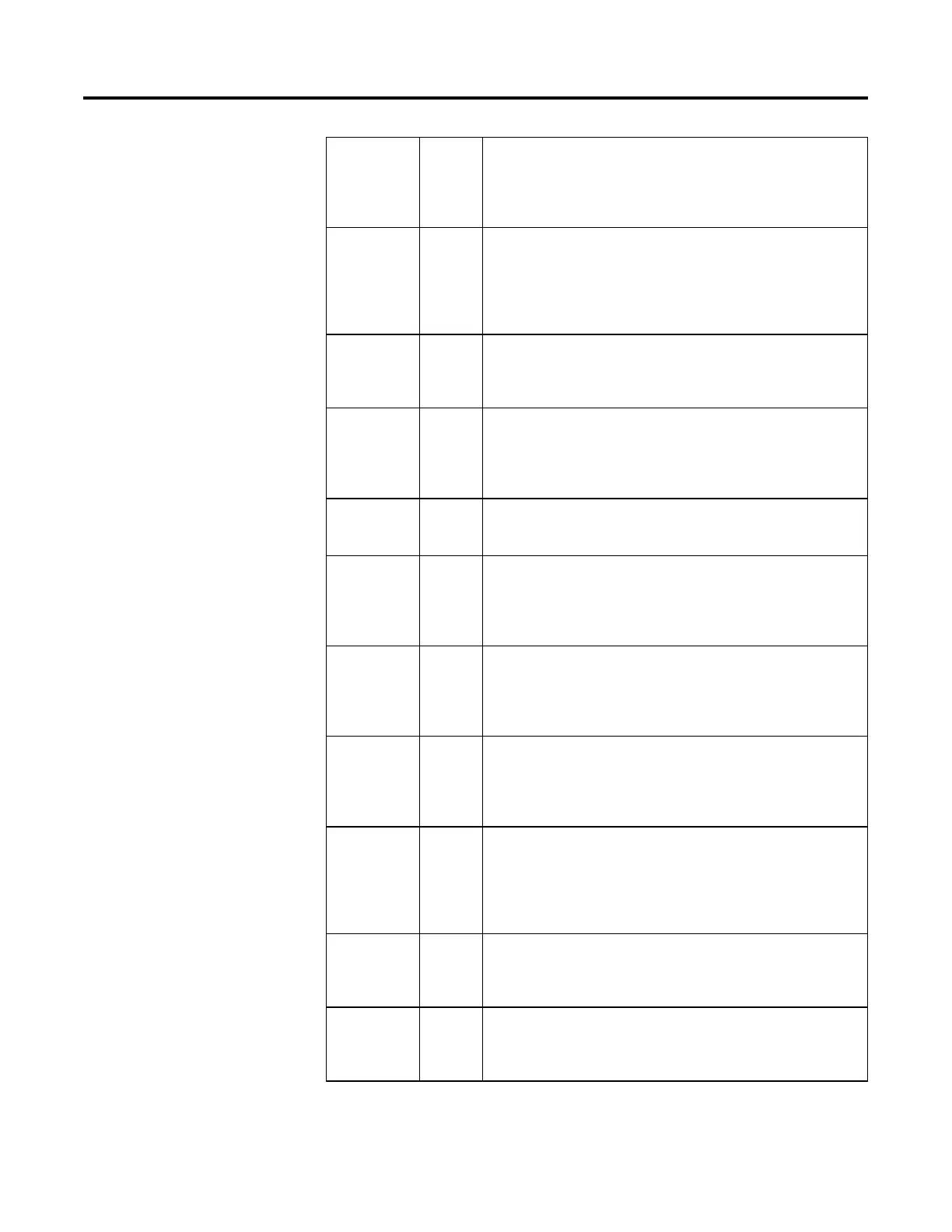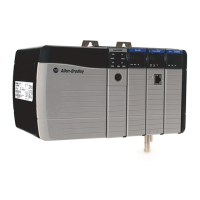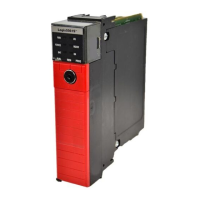Process Control Instructions
Rockwell Automation Publication 1756-RM006K-EN-P - November 2018 69
SPOper REAL SP operator value, scaled in PV units. SP is set to this value when in Operator control
and not Cascade/Ratio mode. If the value of SPOper < SPLLimit or > SPHLimit, the
instruction sets the appropriate bit in Status and limits the value used for SP.
Valid = SPLLimit to SPHLimit
Default = 0.0
SPCascade REAL SP Cascade value, scaled in PV units. If CascadeRatio is true and UseRatio is false, then
SP = SPCascade. This is typically the CVEU of a primary loop. If CascadeRatio and
UseRatio are true, then SP = (SPCascade x Ratio). If the value of SPCascade < SPLLimit
or > SPHLimit, set the appropriate bit in Status and limit the value used for SP.
Valid = SPLLimit to SPHLimit
Default = 0.0
SPHLimit REAL SP high limit value, scaled in PV units. If SPHLimit > PVEUMax, the instruction sets the
appropriate bit in Status.
Valid = SPLLimit to PVEUMax
Default = 100.0
SPLLimit REAL SP low limit value, scaled in PV units. If SPLLimit < PVEUMin, the instruction sets the
appropriate bit in Status. If SPHLimit < SPLLimit, the instruction sets the appropriate
bit in Status and limits SP using the value of SPLLimit.
Valid = PVEUMin to SPHLimit
Default = 0.0
UseRatio BOOL Allow ratio control permissive. Set to true to enable ratio control when in Cascade/Ratio
mode.
Default is false.
RatioProg REAL Ratio program multiplier. Ratio and RatioOper are set equal to this value when in
Program control. If RatioProg < RatioLLimit or > RatioHLimit, the instruction sets the
appropriate bit in Status and limits the value used for Ratio.
Valid = RatioLLimit to RatioHLimit
Default = 1.0
RatioOper REAL Ratio operator multiplier. Ratio is set equal to this value when in Operator control. If
RatioOper < RatioLLimit or > RatioHLimit, the instruction sets the appropriate bit in
Status and limits the value used for Ratio.
Valid = RatioLLimit to RatioHLimit
Default = 1.0
RatioHLimit REAL
Ratio high limit value. Limits the value of Ratio obtained from RatioProg or RatioOper. If
RatioHLimit < RatioLLimit, the instruction sets the appropriate bit in Status and limits
Ratio using the value of RatioLLimit.
Valid = RatioLLimit to maximum positive float
Default = 1.0
RatioLLimit REAL Ratio low limit value. Limits the value of Ratio obtained from RatioProg or RatioOper. If
RatioLLimit < 0, the instruction sets the appropriate bit in Status and limits the value to
zero. If RatioHLimit < RatioLLimit, the instruction sets the appropriate bit in Status and
limits Ratio using the value of RatioLLimit.
Valid = 0.0 to RatioHLimit
Default = 1.0
CVFault BOOL Control variable bad health indicator. If CVEU controls an analog output, then CVFault
normally comes from the analog output’s fault status. When true, CVFault indicates an
error on the output module and the instruction sets the appropriate bit in Status.
Default is false = "good health"
CVInitReq BOOL CV initialization request. This signal is normally controlled by the "In Hold" status on
the analog output module controlled by CVEU or from the InitPrimary output of a
secondary PID loop.
Default is false.

